Here we discuss the Anaerobic Digestion of Manure: The first section is a general informational article, followed by our original article where we explain their 2017 breakthrough in the throughput of manure-fed AD Plants described by the Ductor biogas company using chicken manure.
Anaerobic digestion (AD) of dairy manure provides several environmental and economic benefits, including the generation of renewable energy and the reduction of greenhouse gas emissions. But it is underused as a manure treatment alternative. Dairy manure is the largest single source of methane from livestock waste management in the United States.
Part 1 – The Basic Purposes of Anaerobic Digesters
Anaerobic digesters all serve the same basic purpose. They store manure in the lack of oxygen and provide the ideal environment for methane-forming microbes (methanogens) to develop. There are several distinct types of anaerobic digesters, each performing the same fundamental function in somewhat different ways.
Manure is the primary input if a digester is used to treat manure first and mainly. A word of warning is relevant to add here. Co-digestion may increase the quantity of nutrients in the effluent. So farmers contemplating co-digestion should first verify that they will still comply with their nutrient management plans after implementation.
Watch our video to see the work one company is doing for manure biogas:
<< Coming Soon >>
Biomass-to-Energy Conversion by the AD Process
Previously, animal manure was collected and sold as fertiliser, or it was simply spread on agricultural land. Tighter environmental limits on smell and water pollution need some type of waste treatment to achieve them, which gives further incentives for biomass-to-energy conversion.
Anaerobic digestion is a unique treatment approach for animal manure management since it may provide positive advantages such as renewable energy, reduced water pollution, and reduced air pollutants. Anaerobic digestion of animal dung is gaining favour as a method of protecting the environment and efficiently recycling resources into farming systems.
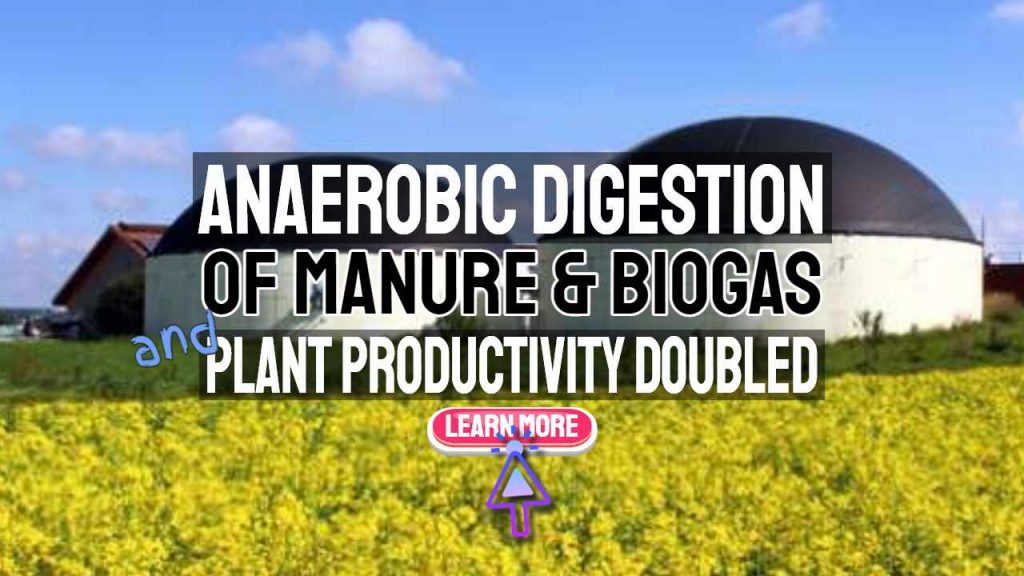
Livestock Farmers Search for Ways to Develop AD
Livestock farmers interested in generating electricity from manure must first determine the quantity of biogas that their dung has the capacity to create. They may also want to know if additional material can be added to manure to increase the amount of biogas produced by the digester.
Anaerobic digestion may convert almost all organic matter (OM) to biogas. Some materials, however, produce more methane than others. Three metrics are important namely Volatile Solids (VS), Oxygen Demand (OD), and Biochemical Methane Prospective (BMP) These are monitored and the data collected is used to restrict the spectrum of methane-producing materials from potential to likely to probable.
Manure Management Requirements
Based on its size and location, each farm has distinct manure management requirements. Some dairy manure is managed as a solid, stored in mounds or stacks, dispersed daily, or left to lay on grazing pastures or ranges. These methane-reducing management strategies are widespread in smaller enterprises.
Larger enterprises, on the other hand, tend to handle manure in ways that have a larger potential for methane emissions. Flush collection systems gather and remove manure from barns and milking parlours using enormous amounts of water, whereas scrape collection systems remove manure from barns and alleys.
These systems transport manure to anaerobic lagoons, tanks, or clay ponds for long-term storage under anaerobic conditions, where the manure emits methane. Depending on the region and cropping method, some dairies store manure for up to a year or more before applying it to the field.
Methane Production Keeps it Simple
Methane production from manure is a simple process. When manure is sealed in an airtight container, it produces biogas, which is a combination of methane (CH4), carbon dioxide (CO2), and trace amounts of other gases. Because the process is so automated, anaerobic digestion was thought to be a prominent example of spontaneous production prior to Pasteur. The microbes that produce biogas were thought to spawn directly from dung.
To begin producing biogas, two components are required: organic waste and a seed colony of microbes. Manure, fortunately, includes both. Fresh manure contains 80 to 90%t organic matter, and most domestic animals expel living cultures of biogas generating organisms from their colons on a continual basis.
Objections to Biogas Industry Development as Perceived by the Public
The following are the top objections to developing biogas repeatedly voiced when biogas technology is mentioned:
- It is truly worrying and dangerous because it will mean AD plants multiply and they will take our food away from us. Ordinary people will go hungry. The same old energy companies (Shell, BP etc) will muscle in, buy up all the farms and grow even richer, making fuel only rich people can afford.
- It isn't needed because solar and wind are cheaper, less complicated, and someone will make a cheap battery that everyone will be able to buy very soon.
- It is inefficient/ and costs too much to ever help me.
- Biogas technology is heavily subsidized which means everyone pays more tax than necessary, and the subsidy money goes to wealthy farmers/ landowners and makes them richer.
- It's too smelly.
Those that know the biogas industry MUST TAKE GREAT CARE to counter these objections. The author's view is as follows:
- There is no intention to use food to any significant extent at all. Anaerobic digestion feed materials will always be waste materials, albeit food crop residues (leaves, stalks, stems etc) will be used. Where grass will be used it must only be used in wet cold locations incapable of growing much else of any value.
- The AD process is not a competitor with other renewable energy sources. It does a whole lot of things to make our world much more sustainable which no other process can do, and we need to use every tool available to slow climate change in the short time left. On the subject of cheap sustainable battery availability; how long have we been promised better batteries already!
- Efficiency is improving all the time as the industry develops and it benefits from ongoing research and innovation. As efficiency rises costs fall. That has happened in the wind and solar technologies which got started sooner, and (the relative newcomer) AD will be no different. Cost is relative, and as we write during a natural gas price crisis, biogas energy is now cheap, in comparison.
- Subsidies have been phased out and reduced in the UK. If not reduced elsewhere, handouts with little evidence of benefit, have been stopped.
- While there is a potential for biogas plant odour, well-run AD plants are not bad neighbours. Studies have shown that digestate spreading gives rise to less odour than manure, and the smell dissipates more rapidly.
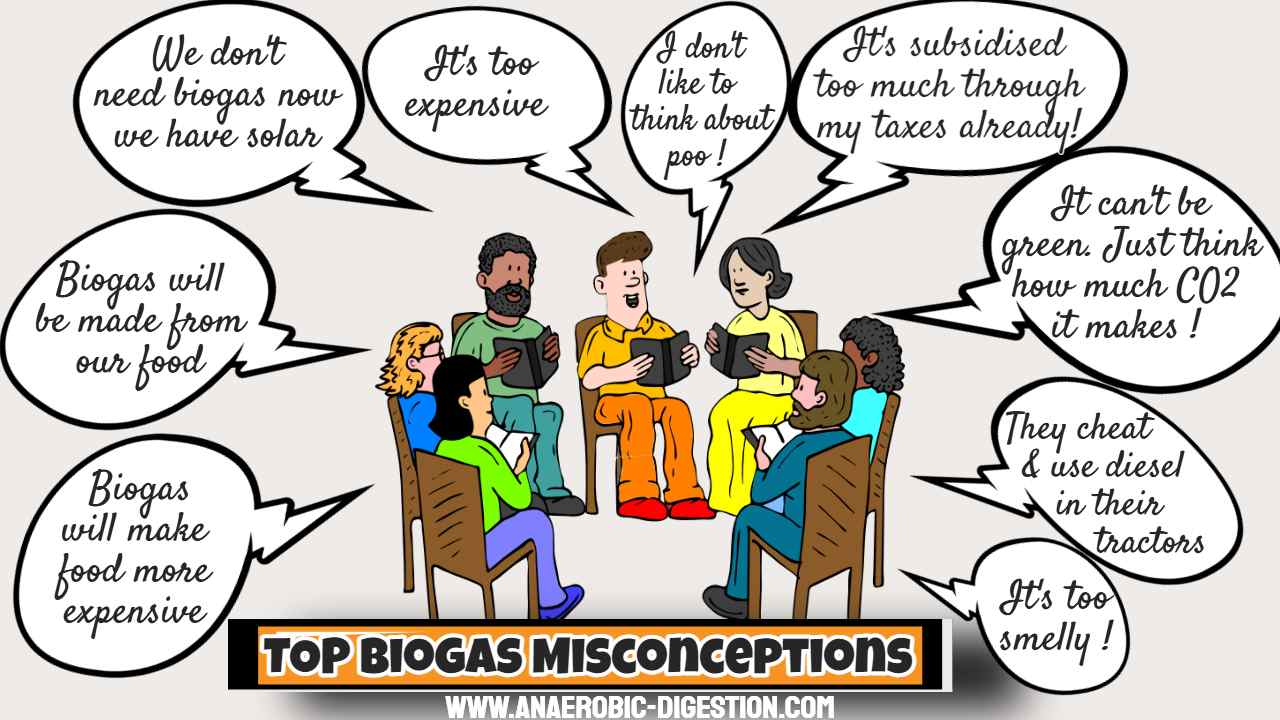
The author of this blog would even go as far as to say that the WBA/ ADBA should promote the idea that all governments should legislate as soon as possible to make the use of food crops for energy production illegal. Only then will all states be able to agree on the implementation of measures to fully develop the huge value of biogas for global decarbonization.
Conclusion
On-farm anaerobic digestion of dairy manure is utilised to generate electricity and reduce odours. During the digestive process, acidogenic bacteria convert much of the organic matter in manure to volatile fatty acids (VFAs), which are subsequently devoured by methanogenic bacteria to generate methane, carbon dioxide, and a few other gases.
These microbial activities change nitrogen, phosphorus, and potassium, but these nutrients are not eliminated. During the digestive process, some nutrients, such as sulphur, are transformed into other compounds; in this case, hydrogen sulphide gas is created.
The original 2017 article follows:
Part 2 – The Problem With Anaerobic Digestion of Manure
A new pre-treatment process development by Ductor™ raises new hope for super-efficient on-farm manure fed biogas plants.
Almost all organic materials such as manure are good feedstock materials for biogas production.
Farm manures, from dairy manure to chicken litter are available in abundance as feedstock. But, until now the AD Plants which process them have all suffered from a huge draw-back.
The reactors have to be very large because the fermentation process is very slow for these high Nitrogen (high-N) materials. So, biogas production is low compared with other lower N feeds.
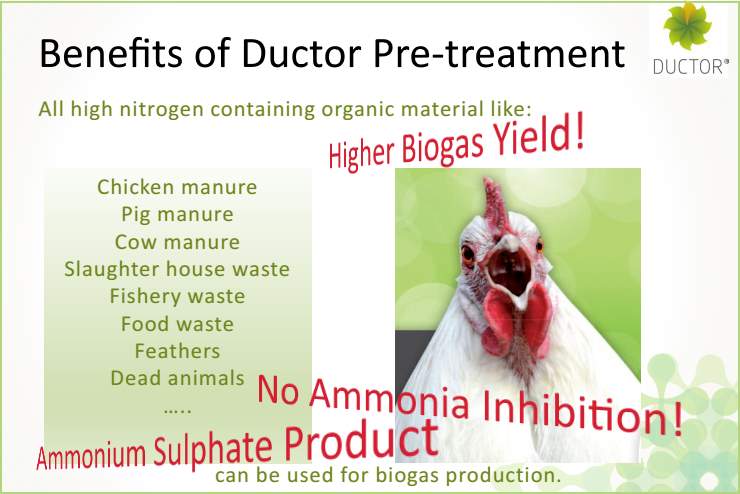
This means that for on-farm manure anaerobic digestion to be economically viable, only very large farms that can provide economy of scale can benefit from these large AD plants.
The Need for a Breakthrough in Manure AD Plant Productivity
Until now the (high-N) reactors have had to be very large because the fermentation process is very slow for these high Nitrogen (high-N) materials.
A breakthrough in AD process technology is needed to raise the throughput rate. We know this is possible because every cow on the planet does it far more efficiently than any man-made biogas reactor!
The Ductor™ Approach which Resulted in AD Plant Productivity Doubled In Tests
High-N materials hamper biogas production by inhibiting the bacteria in charge of breaking down organic material.
So, Ductor's process designers said: “What if nitrogen could be separated from feedstock BEFORE biogas production?”
So, they embarked on a research and development project to find a way to do just that.
And, now this is possible, as a new approach to AD Plant process design using an additional fermentation stage to pre-treat feedstock. This new way has been developed in Finland by Ductor™.
This process is known as the Ductor™ fermentation technology, where feedstock is (currently) fermented for about five days to convert organic nitrogen into inorganic one, namely ammonia (NH3).
Ammonia is then processed out from slurry by stripping it out and storing it in liquid form, which can be used as a raw material for fertilizer production. According to Ductor's website in a trial the ratio of output fertiliser was 115 tons of ammonium sulphate, and 640 tons of solid organic material (fibrous digestate).
The Benefits of Ductor Fermentation Technology
This approach brings three clear benefits:
- Nitrogen is separated from bulk material, which now becomes a phosphorous fertilizer, and if potassium hydroxide is used as the pH controlling agent, a P & K fertilizer.
- Nitrogen no longer hampers the main biogas process, and thus a higher efficiency can be achieved.
- The removal of nitrogen allows new, high N feedstock materials such as poultry manure.
So, it really is possible to select new methods and approaches, and thus recycle the nutrients in a more efficient way.
A great benefit is that additional costs are more than compensated by the benefits brought in as side-effects such as improved biogas yield.
However, subject to ABP Regulations compliance, the separated fertiliser (ammonium sulphate) can become a premium value product sold off-farm as a renewable chemical fertiliser for income, while the fibrous digestate is returned to the farm fields to provide fertiliser for the farm itself.
Furthermore, it is understood that this process technology, which is very much still in its infancy, can be further developed for even better efficiency.
[Published July 2017. Updated December 2021.]


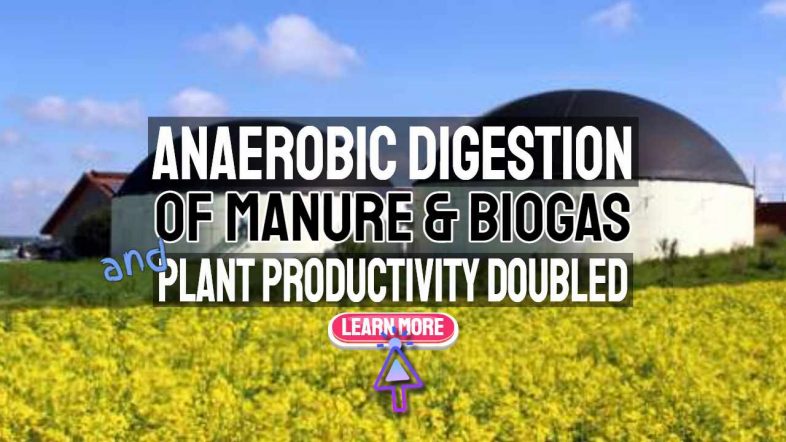
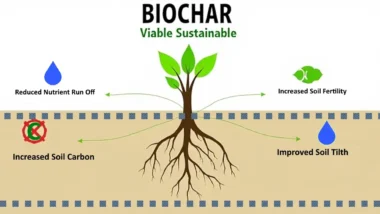
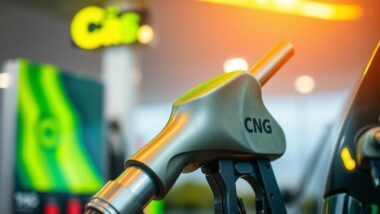

Washington state is in desperate need for bio gas plants. Bellingham, Washington is planning to build a waterfront park ON TOP of 2 layers of landfill – one still being above ground (a heap about 20+ feet high.
Outstanding development possibilities. I am interested in processing broiler litter in the SE US.